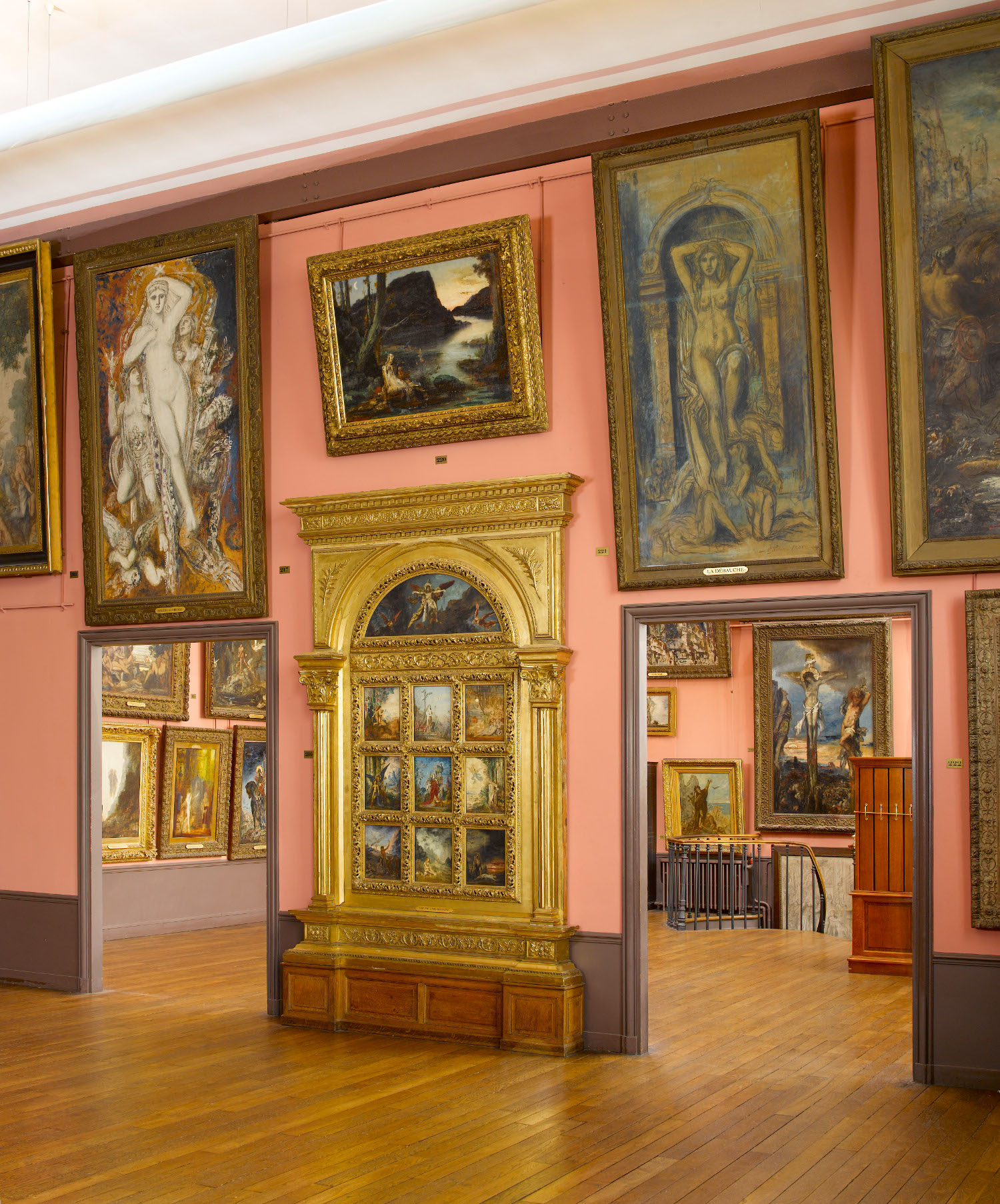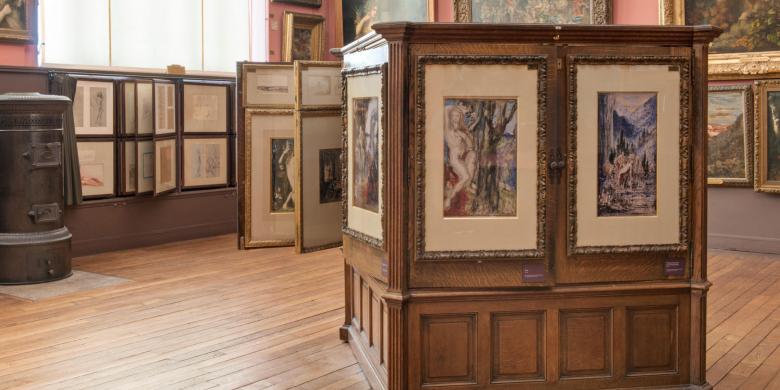The first room in the large studio on the third floor is dominated by Jupiter and Semele, painted in 1895 for Leopold Goldschmidt, who donated it to the museum in 1903. A fascinating work, also enlarged, with its bright colours, glowing blue, red and green, it is reminiscent of glazes on the Bernard Palissy ceramics belonging to Moreau’s parents, and summarises the artist’s many influences. We can compare this masterpiece with the sketch dated 1889 and with the second version, probably produced around 1894-95 for the future museum, which is simpler and more monumental. Using a number of sources, Gustave Moreau personalises the myth of Jupiter, making him superb, radiant and beardless like Apollo.
In the second room are: The Abduction of Europa, Prometheus, and the enigmatic Unicorns painted around 1888. Two paintings on the theme of Salome are amongst the most famous works in the museum, Salome Dancing before Herod, known as “Salome Tattooed” because of the decorative pattern on the body of the biblical dancer, and The Apparition, a striking image about the persistence of consciousness beyond physical death. The poet as civilising hero appears in a thousand different ways in Gustave Moreau’s painting.
The central figure of the polyptych The Life of Humanity dated 1886, is Orpheus enchanting the animals, set between the biblical cycles of Adam and Cain under a lunette of a bleeding Christ figure. As for Orpheus at the Tomb of Eurydice, this clearly has an autobiographical echo, since it was painted around 1891, after the death in 1890 of his friend Alexandrine Dureux. Nature is at one with his mourning, the sun is going down over the horizon, the trees are an autumnal red, the one Orpheus leans on is broken.


